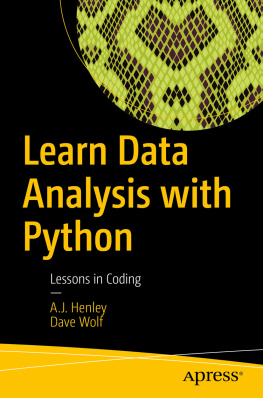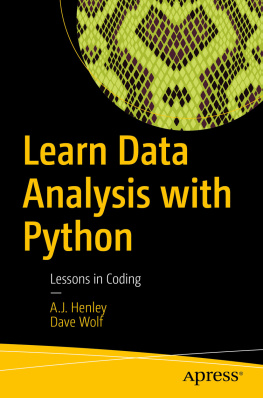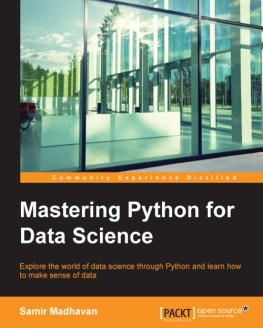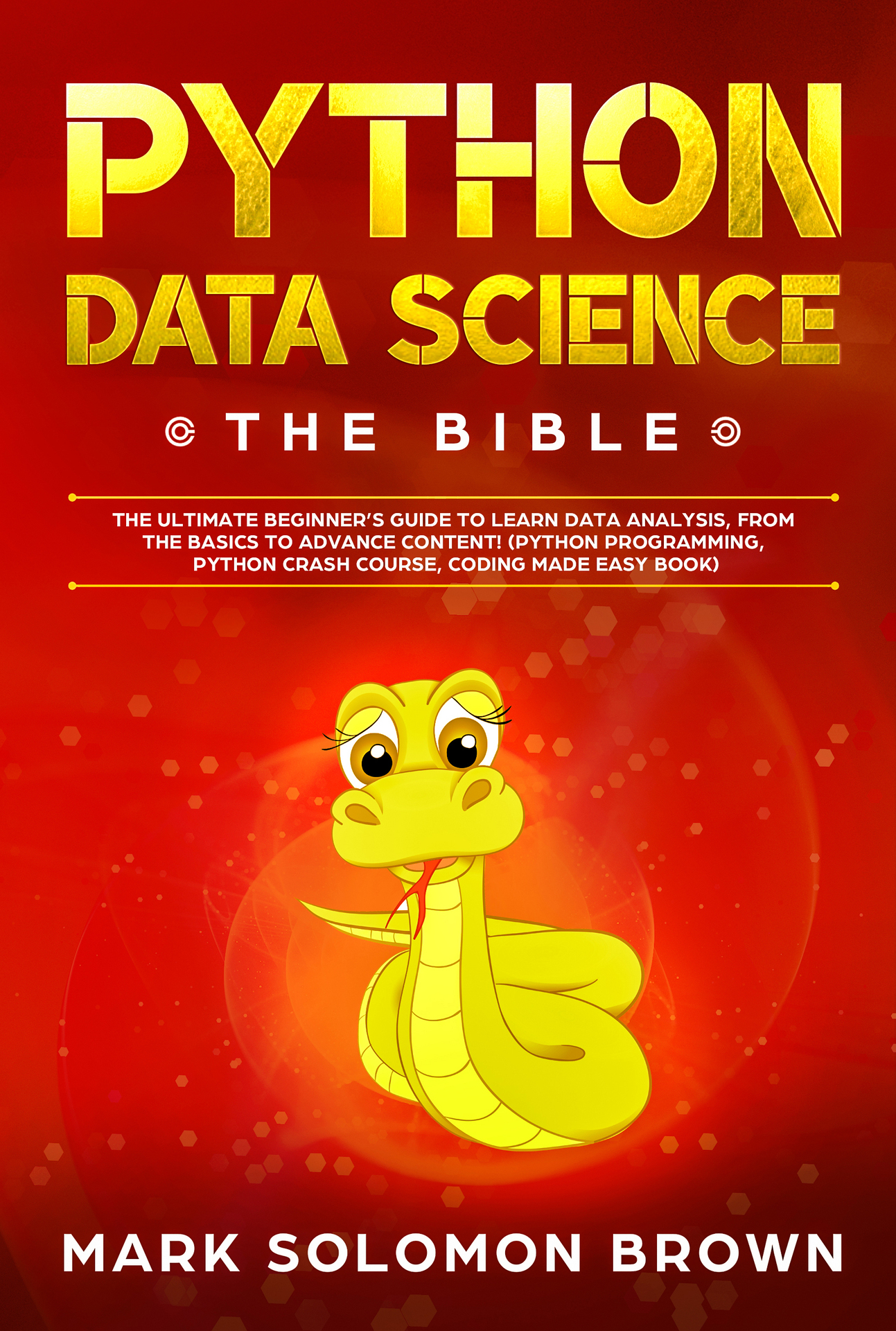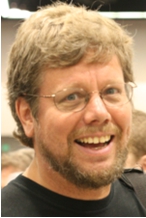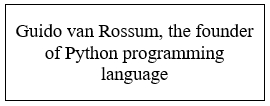Python Data Science
The Bible.
The Ultimate Beginners Guide to Learn Data Analysis, from the Basics and Essentials, to Advance Content! (Python Programming, Python Crash Course, Coding Made Easy Book)
Mark Solomon Brown
Copyright 2019. All rights reserved.
The content contained within this book may not be reproduced, duplicated or transmitted without direct written permission from the author or the publisher.
Under no circumstances will any blame or legal responsibility be held against the publisher, or author, for any damages, reparation, or monetary loss due to the information contained within this book. Either directly or indirectly.
Legal Notice:
This book is copyright protected. This book is only for personal use. You cannot amend, distribute, sell, use, quote or paraphrase any part, or the content within this book, without the consent of the author or publisher.
Disclaimer Notice:
Please note the information contained within this document is for educational and entertainment purposes only. All effort has been executed to present accurate, up to date, and reliable, complete information. No warranties of any kind are declared or implied. Readers acknowledge that the author is not engaging in the rendering of legal, financial or professional advice. The content within this book has been derived from various sources. Please consult a licensed professional before attempting any techniques outlined in this book.
By reading this document, the reader agrees that under no circumstances is the author responsible for any losses, direct or indirect, which are incurred as a result of the use of information contained within this document, including, but not limited to, - errors, omissions, or inaccuracies.
Table Of Contents
Introduction
Dear reader,
Inside this technology eBook guide related to Python programming language, you can learn and find incredibly useful information about one of the most popular and the most used programming language in the IT world - Python. You will read more about the history of Python programming language and its usage, the most important information about the founder and short brief history for the essence of programming languages.
There will be included the most relevant tips and tricks about how easily you can find solutions and be introduced in todays data science thanks to this programming language. You will make your knowledge deeper than before thanks to the most relevant and understandable information and details for why Python is a first-class tool mainly, its libraries for storing, manipulating, and gaining insight from data.
These professional details, tips and tricks and so much more information about Python programming language, you will get instantly in this eBook from the first hand. Be sure that after finishing with your reading, you will be more introduced and more familiar with using of this programming language for data science and researching, thanks to this awesome tech guide understandable and acceptable for everyone who want to know something new in their life.
Wish you easy and peaceful reading,
Mark Solomon Brown
The history of Python and programming languages
Do you know that you can communicate with your computer and it can understand you really clearly? Do you ever imagine what kind of language can you use to give an order to your computer?
That type of language that you can use to communicate mechanically to your computer and give him orders, is called programming language or computer language
A programming language is a formal language, which is built of set of instructions that produce various kinds of output. Programming languages are used in computer programming to implement algorithms, in software engineering for building various software and programs, in digital development for creating websites, web applications, mobile applications and similar things.
There are programmable machines that use a set of specific instructions, rather than general programming languages. Since the early 1800s, programs have been used to direct the behavior of machines such as Jacquard looms, music boxes and player pianos. The programs for these machines did not produce different behavior in response to different inputs or conditions.
Thousands of different programming languages have been created till today and more are being created every year. Many programming languages are written in an imperative form while others languages use the declarative form.
At the University of Manchester, Alick Glennie developed Autocode in the early 1950s. As a programming language, it was powered with compiler to automatically convert the language into machine code. The first code and compiler was developed in 1952 for the Mark 1 computer that will be located at the University of Manchester and it is considered to be the first compiled high-level programming language.
In 1954, FORTRAN was invented at IBM by John Backus. It was the first worldwide high-level general purpose programming language which had a functional implementation as opposed to just paper design. It is still a popular language for high-performance computing and it is used for programs that benchmark and rank the world's fastest supercomputers with extremely high prices and large memory in petabytes.
As the programming and computers world started with the huge rise, the programming languages started to be intended more and more in various development sectors and industries around the world. So, one of these well-known and popular programming languages is Python.
Python is a high-level, general-purpose programming language. Created by Guido van Rossum in 1991, Python is designed with philosophy emphasizes code readability with its notable use of significant whitespace. Python construction and object-oriented approach aim to help programmers write clear, logical code for small and large-scale projects. It supports multiple programming paradigms, including procedural, object-oriented, and functional programming. Python is often described as a "batteries included" language due to its comprehensive standard library.
Python 2.0 was released on 16th of October 2000 with many new features, including a cycle-detecting garbage collector and support for Unicode.
Python 3.0 was released on 3rd of December 2008. It was a major revision of the language that is not completely backward-compatible.
Due to concern about the amount of code written for Python 2, support for Python 2.7 was extended to 2020. Language developer Guido van Rossum sold the responsibility for the project until July 2018, but now shares his leadership as a member of a five-person steering council.
Python interpreters are available for many operating systems. A global community of programmers develops and maintains CPython, an open source reference implementation. A non-profit organization named as the Python Software Foundation, manages and directs resources for Python, CPython and IPython development.
Introduction to Python programming language
Python is a widely used general-purpose, high level programming language. It was initially designed by Guido van Rossum in 1991 and developed by Python Software Foundation. It was mainly developed with emphasis on code readability and its syntax form allows programmers to express concepts in fewer lines of code. That save the programmers time and keep their ideas fresh and tidy.


